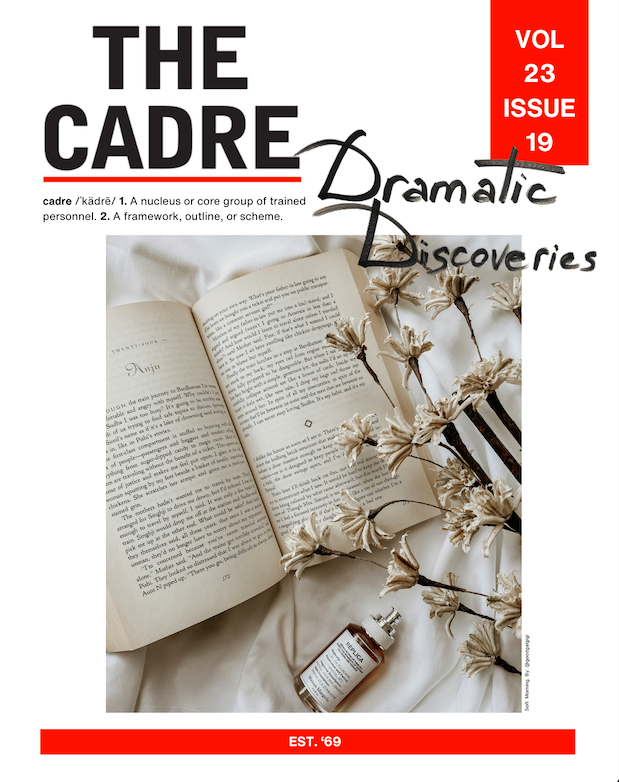Well, my writerly friends, you’re almost done! But as the semester winds down, deadlines are ramping up. And things are bumpin’ at the Writing Centre because of y’all and those final papers. We are booked solid this week, and we expect the same for next week, as well. Fortunately, tis the season to be generous, and so we have added some extra appointments to our schedule, just for you. Please stop by to book an appointment. At the very least, do pop in if you have a quick question. Just in case you forgot, we are in the back of the library learning commons.
Now I realize that these extra appointments aren’t going to work for everyone, so I’ve come up with some self-editing tips that can help you correct your own work. Self-editing can be difficult because it is hard to be objective when you are the author of your own masterpiece. It is so easy to get hung up on sentences that sound intriguing when in actuality they are just super confusing. It is also hard to catch a lot of mistakes because your brain may subconsciously correct errors as you read.
So here’s what I’ve done, again, just for you: First, I’ve identified a couple of key editing issues. Then, I’ve given you two options for proofing: you can approach the task as an “Amateur Editor,†or be the star that I know you are, and get in there as a “Pro Editor.†Ready? Here we go!
- Issue: Punctuation
Amateur Hour:
- Delete all question marks (?), exclamation marks (!), colons (:), and semi-colons (;). Delete them. No-one wants to be badgered by an uncertain or excitable writer. And chances are pretty good that you’re not using the colons and semi-colons properly. It’s nothing personal. It’s just that these are among the most badly abused pieces of punctuation out there.
Going Pro:
- Delete the question marks and exclamation marks, unless you are using them for a deliberate rhetorical purpose.
- Use colons and semicolons sparingly, and if, and ONLY if you are 100% sure you know the rules. Colons indicate a list is to follow, or join two complete sentences together when the second sentence restates or defines the first. Semi-colons are used as a stronger punctuation compared to a comma. They should be used to connect closely related ideas, and link lists or clauses when commas are confusing.
-
- Colon Examples:
-
-
- Ex. 1: You know how to improve your grammar: practice, follow these rules, go to the WC.
- Ex. 2: She’d been working double shifts for the last month: she needed extra money for Christmas presents.
- Semi-colon Examples:
- Ex. 1: Many people enjoy to write; however, there are many different writing styles that people can choose to use.
- Ex. 2: Some people have difficulty with fragments, run-on sentences, and comma splices; others have problems with the use of semi-colons, colons, and other forms of punctuation.
-
- Issue: Overly long sentences (which could be run-on sentences)
Amateur Hour:
- Take a careful look at any sentence that runs three or more lines of typed text. The more you pack into a sentence, the more likely you may have an error.
- Look at what you have, and allot one main idea per sentence. If you only have one main idea, try to cut down on extra words or jargon.
Going Pro:
- Read each sentence aloud, and as if you were presenting your paper to a class. Make note of where you pause. Should you add a comma? Break the sentence into two, or try to make the sentence concise and straight to the point.
- If you really want to challenge yourself, make sure that each sentence has one subject (which can be a compound subject), and one predicate (or compound predicate). I don’t want to overwhelm things here, so if you want more on subjects and predicates, come by the WC.
- Issue: Poor use of quotations
Amateur Hour:
- Make sure that you have included adequate referencing material for your quotes, making sure to follow correct format for your course/discipline (MLA, APA, CSE, ASA, Chicago, etc).
Going Pro:
- Try to sandwich your quote: be sure to introduce the quote and conclude the quote within your own words. You are the master of your writing, not the person who said the quote. Own your paper. Add your ideas. Quotation sandwiches are a more sophisticated way to write and make the quotes very applicable to your paper.
-
- Ex. 1: As Gary Graphite said in the Cadre that: “Writing is never perfect,†but I feel with practice I can get my writing to perfection.
- Issue: Structure
Amateur Hour:
- Use your eyes, and run a visual check on your paper. How do the lengths of everything look?
- The length of the introduction should be pretty similar to the length of the conclusion.
- If this is just a basic five paragraph essay (please, please tell me that it is not), then the three body paragraphs should be approximately equal in size. Allot the same amount of time talking about each subtopic in the paper. Don’t spend your whole paper talking about one issue and then only spend two lines talking about the others.
Going Pro:
- Killer thesis statement. Most profs look for a thesis statement and even give marks for it. Thesis statements should be obvious, and should clearly explain what your paper is about.
WARNING: If you can’t write a thesis statement, book an appointment immediately … I’m not kidding!
- Clear topic sentences. Each paragraph should have them. Identify your topic sentences and make sure that they clearly connect to your thesis.
- Smooth transitions. Look at how you move (or transition) from one sentence to another, and one paragraph to another. You want to be logical. You want to be smooth. Don’t abandon your reader in the middle of a paragraph, especially if that person is grading your paper. It won’t end well for you.
- Bleeding ideas. Ouchie! But what do I mean by this? Sometimes, you think you have a pretty “dope†idea. (I can’t believe I used the word dope. Ugh, I’m trying to connect with you people!) Anyway, you have this great idea and you want to talk about it but make sure it is in its allotted paragraph(s). Once you start a new idea in a new paragraph don’t let that haunting little guy come back. Once you’ve said your piece, just leave it.
- Issue: Can’t find any errors? (hah!)
Amateur Hour:
- There is almost always something that can be worked on. Writing is never perfect. Try to find errors by plugging your paper into an online spelling/grammar check. These give you quick feedback and can be useful. Remember to double check every change you make, because a computer sometimes doesn’t know what you are trying to convey in a sentence.
Going Pro:
- Print it out. Working off a hard-copy is always so much easier than working off of a computer. Sometimes you just need to revert back to your ancestors, and grab the pen and hack away at your problems.
- If you don’t want to spend the 11 cents on getting your paper printed out, then try changing the font. This still gives you a new perspective on the writing. It’s just a little bit less effective, in my opinion. But whatever. I’m just a talking pencil.
- Finally, for the love of all that is good and holy, READ IT OUT LOUD. I promise you that this will make a major difference. If you don’t like the sound of your voice, get a friend.
If you are stuck on anything in your papers, please drop by the WC or drop us a line at our WC email: writingcentre@upei.ca.
Have a great last two weeks. We’ll talk again next Wednesday. Until then, I’m headed back to the pencil case.
Your pal,
Gary Graphite









